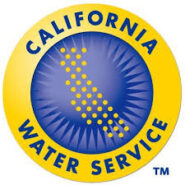California Water… a complicated network of rivers, canals, dams, conveyance systems, pumps, reservoirs and other water structures
Californians rely on a complicated network of rivers, canals, dams, conveyance systems, pumps, reservoirs and other water structures for their water supply. This is primarily because precipitation – rain and snow – fall mainly in the northern part of the state. However the greatest water needs are in the southern part of the state.
Some of the most important water supply systems in California include the State Water Project (California Aqueduct, built by the state); Central Valley Project (federal project); Colorado River systems (federal project).
How much water is there in California?
The average annual statewide precipitation is about 23 inches. That’s about 182 million acre-feet, spread over the entire state.
About 65 percent of this precipitation is consumed by transpiration in trees and other plants and lost to evaporation. About 35 percent is left for use as runoff.
How is the water in California used?
The state’s runoff – about 62 million acre-feet, on average – is used for urban, industrial, agricultural and environmental purposes.
The environment uses a larger portion of water than any other sec tor. That water is used for ecosystem maintenance, rivers, estuaries, wetlands and other waterway’s ecological needs. This includes protections of endangered species.
Out-of-state supplies from the Colorado and Klamath rivers bring the available surface water supply total to 82.5 million acre-feet.
According to the most recent figures from the California Department of Water Resources, water use in California is broken down in the following:
- Environmental use: 48 percent
- Agricultural use: 41 percent
- Urban use: 11 percent
Water management in California
Early in the development of California, canals, dams and other structures were built to move water around the state. Water, in general, was moved from the wettest parts of the state to serve the growing need of California’s cities. California agriculture grew in scope after the Depression, so water was also channeled to growing regions. During the middle part of the 20th Century, several large water projects were constructed, such as the California Aqueduct, which enabled large portions of California to develop and thrive.
This complicated network of water infrastructure has enabled California to become a powerful economic force, providing jobs for people, habitat for wildlife, recreational facilities, and enabling businesses and agriculture to flourish.
Water has always been controversial in California, due to the out-of-balance distribution of water in the state. Northern communities and southern communities do not always agree on how much water should be moved from region to region and lawsuits and legislation involving water have greatly impacted California’s water management and supply.





